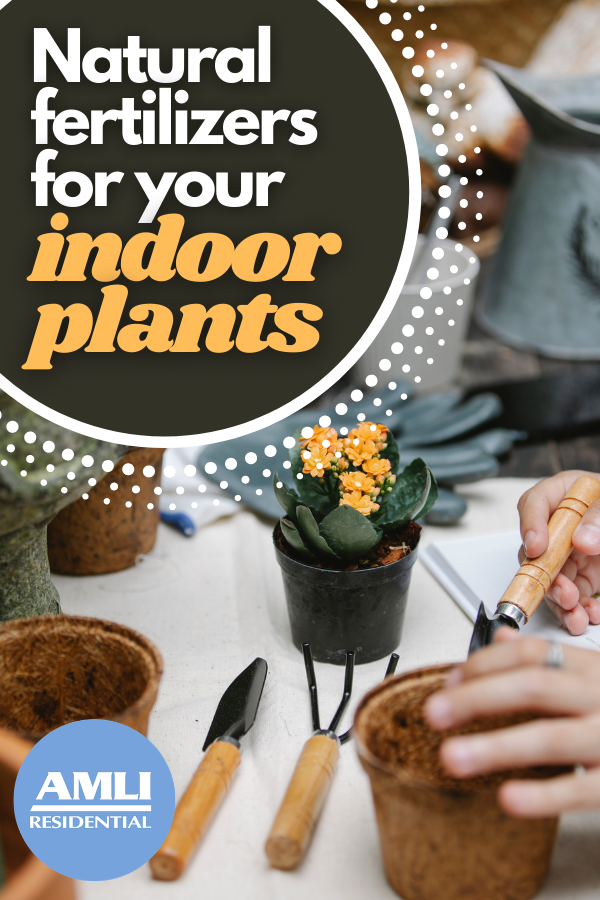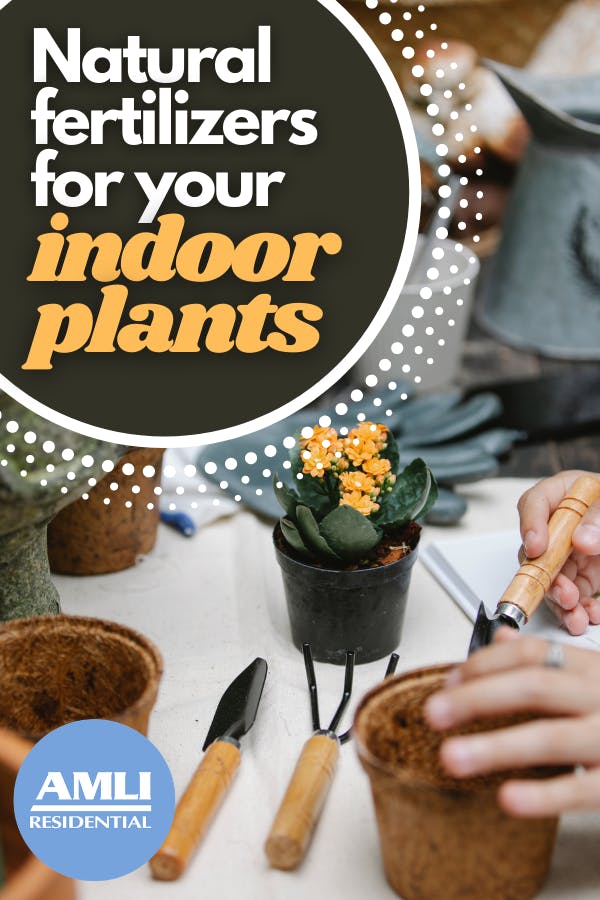If you’re a proud owner of indoor plants, then you already know that different types of plants require different levels of care.
The ultra-hardy philodendron, for example, could probably survive the apocalypse as long as it got an occasional sprinkle of water. The orchid, on the other hand, might dramatically wilt if someone even dares sneeze in the wrong direction.
Finicky orchids…
However green your thumb is (or isn’t), there’s one thing that you can offer to any of your houseplants that they will love, love, love: some good ol’ fertilizer.

What does fertilizer do, anyway?
We wouldn’t even imagine grabbing a bucket of gravel from the construction site down the road and attempting to grow a houseplant in it. Why? Because plants need a combination of vital nutrients to grow, survive and thrive.
Outdoor plants receive most of their nutrients like potassium, calcium, nitrogen, phosphorus and magnesium from the soil, rain and sunshine, whereas indoor plants rely entirely on what’s in their planter to sustain them. That, and how often we remember to water them.
Using fertilizer is a way that we can introduce those vital nutrients to the soil, allowing fledgling plants to grow healthy and strong. Of course, every plant should be fertilized at its own specific time, age and frequency. Too much fertilizer can kill the plant, so make sure to double-check what’s best for your green, leafy friend.
Natural fertilizers for indoor plants
Chemically-based plant fertilizers are created through heavy industrial processes, which not only damages your precious plants but also leaves behind a messy trail of environmental impacts. Sure, these commercial fertilizers are cheap and readily available, but many of the nutrients (*cough* chemicals *cough*) are extracted from petroleum and other fossil fuels. Plus, the widespread use of chemical fertilizers in general is wreaking havoc on natural soil and water ecosystems.
Luckily, there are plenty of natural fertilizers that you can feed your plants, giving them the nutrition they need without even a single trip to the garden center. You likely already have most of these at home, and you’ll be putting these items to a second use and reducing waste at the same time. It’s a win for your plant, a win for your wallet and a win for the environment!
Egg shells
Egg shells are packed with calcium and phosphorus, making for great fertilizer.
In order to prepare the shells correctly, wash the membrane and any gooey substance from the shells before allowing them to dry completely. Once washed and dried, you can either crush the shells and add them to the soil, or you can soak them in water overnight and use that to water the plant.
Coffee grounds & green tea
This is especially beneficial for plants that require highly acidic soil, like African violets, ferns or jade plants.
Coffee grounds are a great source of nitrogen and are great for both composting and fertilizing. It’s the type of fertilizer that releases nitrogen slowly, as it takes a while for the nutrients to filter through the soil and raise the acidity to a level that the plants like.
If you’re looking to use leftover coffee grounds as fertilizer, then make sure that the grounds are unwashed, as rinsing coffee grounds effectively neutralizes the pH and, therefore, renders the grounds useless.
In addition to coffee grounds, don’t let your tasty tea leaves go to waste after your daily mug of green brew! Let your plants enjoy a cuppa, too.
Just like coffee grounds, green tea leaves are great for adding acidity to soil. Green tea also contains slightly less caffeine than coffee, so it’s less likely that your plants will wilt from what is, effectively, a plant-sized caffeine crash.
To use green tea as a fertilizer, save your used tea bags (remove the leaves from the bag) or loose leaves and allow them to cool down to room temperature. Spread the tea mulch around the base of your plants and voila! Easy as that!
Check out this more in-depth article on how to use green tea as a houseplant fertilizer.
Banana peels
It’s not just the inside of the banana that’s full of potassium! Banana peels are excellent sources of potassium, as well as quite a bit of phosphorus, magnesium and nitrogen.
Banana peels are pretty hardy materials, which makes them a great slow-release fertilizer that will feed your plants over a long period of time, rather than all at once.
To use banana peels as fertilizer, you have a couple options to choose from. You can either place the full peel straight on top of the soil, or you can dice it into small pieces and mix them with the soil before planting your plant.
If you do decide to place the full peel on top, you may want to cover it with a bit of soil so that it doesn’t start to smell too bad as the peel decomposes. This will also help reduce the amount of fruit flies that might start to accumulate in your home.
Leftover cooking water
You might notice that the water you use to boil potatoes or steam vegetables turns brown or green after you’re done cooking with it. That’s because some of the nutrients from the vegetables get leftover in the water, making it a great source of fertilizer for your plants.
Let the water cool down completely before using it for your next watering.
To sum it up
It’s important to know when and how to fertilize your plants so that they stay as healthy as possible. Don’t fertilize in winter, as plants are not in an active state of growth during that time. Also, don’t over fertilize, as that can lead to brown tips and wilted leaves. Check out this handy article on how, when and why to fertilize so that your houseplants can not just survive, but thrive!
Good luck!
Pin it!

Featured photo courtesy Pixabay/KRiPPS_medien


 View All Posts by Colleen Ford
View All Posts by Colleen Ford